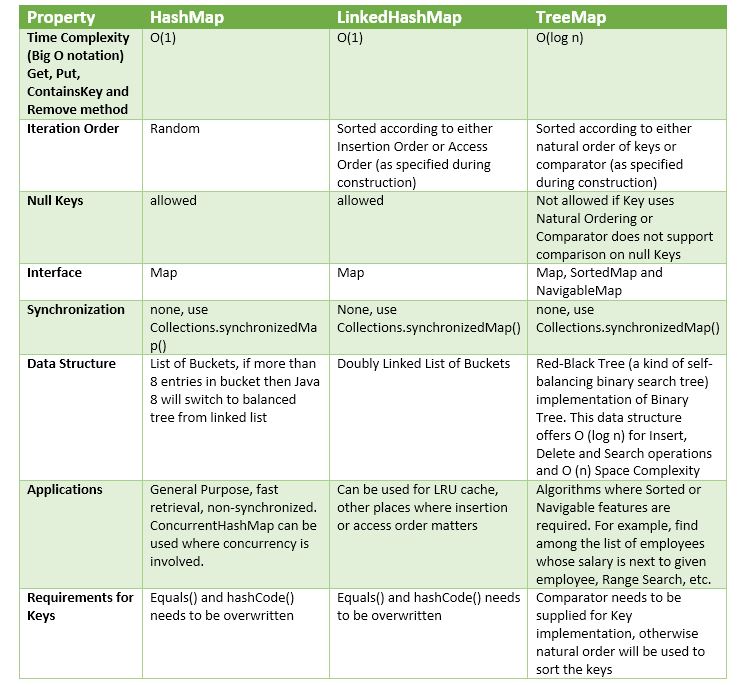What is the difference between HashMap, LinkedHashMap and TreeMap in Java?
I don't see any difference in the output as all the three has keySet and values.
Also, what are Hashtables?
Map<String, String> m1 = new HashMap<>();
m1.put("map", "HashMap");
m1.put("schildt", "java2");
m1.put("mathew", "Hyden");
m1.put("schildt", "java2s");
print(m1.keySet());
print(m1.values());
SortedMap<String, String> sm = new TreeMap<>();
sm.put("map", "TreeMap");
sm.put("schildt", "java2");
sm.put("mathew", "Hyden");
sm.put("schildt", "java2s");
print(sm.keySet());
print(sm.values());
LinkedHashMap<String, String> lm = new LinkedHashMap<>();
lm.put("map", "LinkedHashMap");
lm.put("schildt", "java2");
lm.put("mathew", "Hyden");
lm.put("schildt", "java2s");
print(lm.keySet());
print(lm.values());







